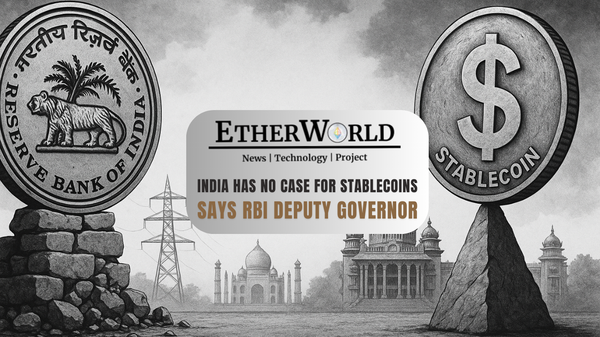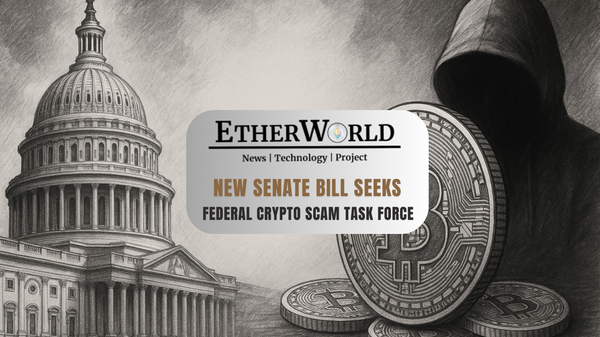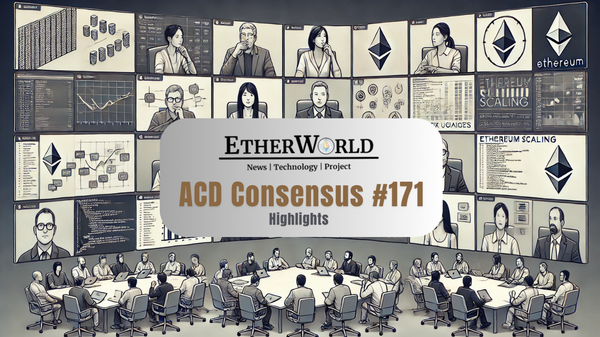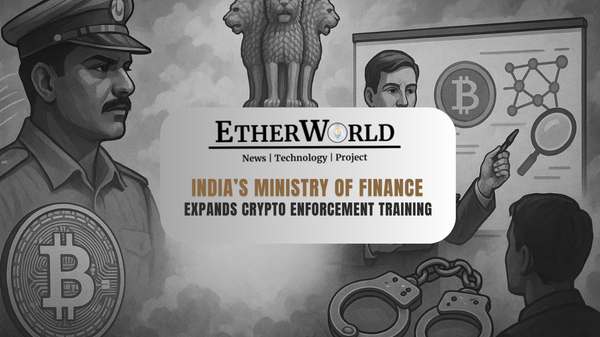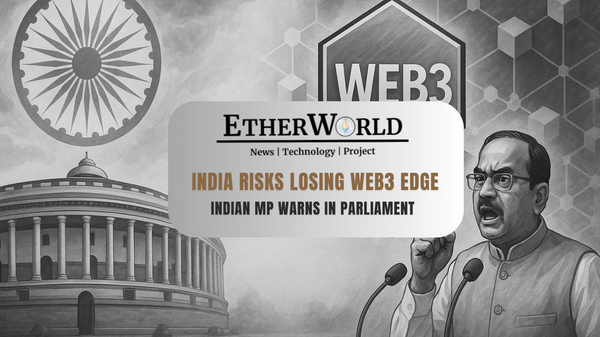Testnets are the networks meant to be used to test decentralized applications (dApps), smart contracts etc. before deploying it to the mainnet. There has been many testnets in the Ethereum blockchain such as Ropsten, Goerli, Rinkeby, Kovan etc. Sepolia is the recent most testnet depolyed for Ethereum's Proof of Work test network and is expected to replace Ropsten.
Sepolia-Sepolia Beacon Chain testnet is merged on 6th July at 17:00 UTC.
July 7, 2022: Sepolia testnet is merged and the chain is finalizing.
Highlights from the testnet merge
- None of the client teams reported any Merge specific issues.
- EL client Besu reported an unrelated issue, fix is available with release 22.4.4.
- The participation rate at the time of merge was ~95%. It can not be 100% due to lost validator keys.
- A few hours later, 25-30% of the sepolia validator set had issues with configuration, which were quickly fixed.
Sepolia merged successfully!
— parithosh | ???? (@parithosh_j) July 7, 2022
After some config issues, the chain is finalizing. There were no client related issues. 1 EF node had a hiccup during the transition, but it self healed without intervention. Of a possible ~95% participation rate, we are generally seeing ~95%. https://t.co/SKTPCDF9Kk pic.twitter.com/ad2qruqUr6
June 25, 2022: The Merge on Sepolia planned to be on 6th July, 2022. When the TTD of the PoW chain Exceeds 17,000,000,000,000,000; the transition to PoS will happen.
June 20, 2022: Sepolia Beacon Chain is live!
Sepolia Testnet
Sepolia testnet was launched in October 2021 to eventually replace the Ropsten Testnet. It is a cross-client PoW testnet which is a like-for-like representation of Ethereum.
PoW (Proof of Work) is a consensus mechanism that involves solving a high computational problem to create new blocks in a blockchain. To have a overview on PoW and what it does, checkout this video.
Sepolia is made mostly for client developers and for dApp developers to have a public space to harden and make their software resistant to attacks. After the software is tested in the testnet, it can be deployed to the mainnet.
As Sepolia is based on a PoW consensus mechanism, SEPPETH, the Ether used in the testnet, can be mined. Instead of relying on faucets to get the test ether, it is better to stash SEPPETH.
Sepolia has mostly public validators, not pre-authorized validators, so it fails to reach finality sometimes.
Ethereum is moving from Proof-of-Work to Proof-of-Stake (The Merge). It's expected that Ethereum developers will maintain two test networks even post Merge
- Sepolia - Sepolia Beacon Chain (SBC): The Sepolia PoW testnet that will be merged to SBC, the PoS testnet; and
- Görli-Prater: Goerli is the current PoA test network that will be merged to Prater, the beacon chain testnet (PoS).
Currently, Sepolia lacks infrastructure, therefore it is less popular among the testing developers but applications should consider deploying at Sepolia first.
Sepolia block explorer is recently launched by etherscan.io. Etherscan is a block explorer and analytics platform for Ethereum and some of the L2 chains.
Introductory tweet.
You can find the block time, when was the last block crested, transaction time address etc of the Sepolia testnet at https://sepolia.etherscan.io/.
Sepolia Beacon Chain
Beacon chain is the PoS (Proof-of-Stake) version of the Ethereum blockchain. At present, it doesn't change much on Ethereum mainnet except the consensus mechanism. It has been running PoS successfully for over 18 months, giving confidence to Ethereum developers plan the Merge upgrade.
Sepolia Beacon Chain (SBC) will be having a minimal validator set, that is,it will be restricted with a permissioned deposit contract. Therefore becoming a validator is permissioned.
Initially SBC will have around 2000 validators but may increase in the future.
Here are the current validator set participants.
"We'd ideally like to keep the sepolia validator set closed to known entities that currently stake significantly on mainnet (and have done a proven good job). We want to keep it closed since we'd like to provide a great, stable testnet env for developers and it's a bit easier if the validator set is small as possible." - Paritosh via Github
Sepolia Beacon Chain genesis is set to be launched on 20th June 2022 at 2pm and giving client teams a week to setup their infrastructure.
SBC will generate its own ERC-20 token to become a validator. ERC stand for "Ethereum request for comment". ERC-20 is a token standard on the Ethereum blockchain. It was FIRST implemented In 2015.
Some of the well-known ERC-20 tokens are Maker (MKR), Basic Attention Token (BAT), OMG Network (OMG) etc.
You can find the full Github Thread regarding the Sepolia Beacon Chain here.
To know how to become a validator in a beacon chain, have a follow-up here.
SBC Specifications
The Sepolia Beacon Chain will have a TTD (Total Terminal Difficulty) of 100000000000000000000000.
Total Difficulty is the total sum of all block’s difficulty until the present block.
Total Terminal Difficulty is the total amount of difficulty reached by a network which triggers a consensus upgrade, that is, from PoW to PoS or to any other consensus mechanisms.
Here are the confirmed validators and their client team mapping:
- EF: 0-100
- Nethermind: 100-199
- Besu: 200-299
- Erigon: 300-399
- Lighthouse: 400-499
- Teku: 500-599
- Nimbus: 600-699
- Lodestar: 700-799
- Prysm: 800-899
- Attestant/Vouch: 900-999
- q9f: 1000-1099
- Lightclient: 1100-1199
- Nalepae: 1200-1299
- Ralexstokes: 1300-1399
- Simply staking: 1400-1499
- EF Security: 1500-1549
SBC will have a genesis fork version of 0x90000069. When running testnets, it is desirable to set a wacky Fork version to avoid signature collisions when we go to mainnet. This is known as genesis fork.
The configuration is ready to go, all data for genesis is out. For mnemonic, reach out to Parithosh Jayanthi to become a Genesis validator.
Sepolia's merge with SBC will happen in a couple of weeks. There is no target date set till the time of writing.
To know more about the specifications and the genesis configurations have a follow-up here.
Sepolia-SBC testnet Merge announcement
After Ropstent-RBC testnet merge, Sepolia is the next testnet selected by the Ethereum Developers to be going through the merge process.
As mentioned in the Consensus Layer Call #89, an Ethereum Foundation blog post will be published soon with the client release information. Every node operator is suggested to upgrade their node to be prepared for the upcoming testnet merge.
Sepolia after The Merge
After “The Merge”, Sepolia and Goerli/Prater will be supported for a long term. Sepolia will not have a public validator set and the post-merge testnet will be limited to running applications on it.
Sepolia is expected to be around for future protocol upgrades. Have a follow-up on this article to know more about the testnets after The Merge.
Ethereum’s ACD (all core developers) facilitator, TimBeiko stated that all dApps or projects present on either Rinkeby or Ropsten must be moved to either Goerli or Sepolia as they are expected to be maintained post-merge.
Rinkeby and Ropsten will not be shut down, but will be deprecated. This means that both Rinkeby and Ropsten will no longer be maintained by Ethereum developers but can be maintained by the community.
You can check-out the twitter thread here.
To know more about Sepolia visit https://sepolia.dev/
Disclaimer: The information contained on this web page is for education purposes only. Readers are suggested to conduct their own research, review, analyze and verify the content before relying on them.
To publish press releases, project updates and guest posts with us, please email at contact@etherworld.co.
Subscribe to EtherWorld YouTube channel for ELI5 content.
Support us at Gitcoin
You've something to share with the blockchain community, join us on Discord!



